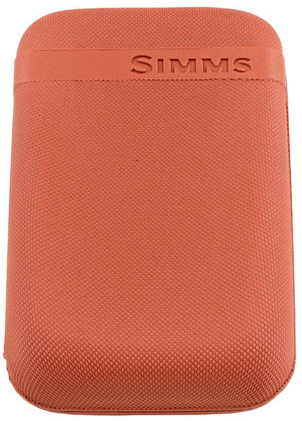Foam fly boxes float. If you want to see your flies again, make sure fly box floats, too.
Several years ago, I was steelhead fishing on Idaho’s Salmon River. I’d spent the week leading up to the trip tying flies and gearing up. Steelhead on the Salmon were—and still are—a fish that came calling on rare occasion, and I wanted to make sure I was ready if and when one decided to swipe at my fly.
As luck would have it, I got into a fish pretty early in the trip—a big hatchery male that just nailed a gawdy, rubber-legged critter I’d tied several of before I hit the road for the week. I was thrilled, first, to get the skunk off quickly, and second, to have a fly I’d “invented” work so well.
I kept casting, and sure enough, I hooked three more fish that first day, and landed one on that same fly. It was easily the best day I’ve had steelhead fishing on the Salmon. Hands down.
After that third hit, though, the rubber legs were pretty tattered. The chenille body was fraying. The fly was done. I reached into the pocket of my jacket for my fly box … and it was gone. I’d been so busy fishing that I I didn’t realize I’d left the zipper pocket open. Somewhere, over the course of the afternoon, the fly box full of freshly tied flies—including half a dozen of the new “secret weapons”—had fallen out.
I was despondent. I reeled up and drove back to the cabin a bunch of us had rented on the the river. I shared my success and then my sad tale of woe. My best day spent steelhead fishing was also likely my worst.
The guys were emphathetic and quickly handed over some flies of their own that I could use the remainder of the trip. We poured some whiskey, and an hour later we were laughing about it.
Not long after that, there was a knock at the cabin door. I got up and answered it, and there stood a fellow fly fisher holding up a foam fly box. My name, phone number and address were scrawled on the back.
“Anybody know who this belongs to?” the angler asked. He told he found the floating fly box bouncing down the Salmon about a mile below where I was fishing. He compared the address on the box to the cars in the parking lot at the cabins we were staying (Idaho’s license plates are indicative of the county in which the vehicle is registered). With my address on the fly box, the angler needed only look for plates with the 8B Bonneville County identifier to determine who might be the owner. A phone call would have been easier, of course, but there was no signal in the canyon.
I grinned, and grabbed the guy by the shoulders offering a dozen “thank yous.” I then reached into the box where every one of my flies was dry as a bone. I grabbed two of the flies that had worked so well that day and handed them to my savior.
“I learned something today,” the angler said. “I’ll always make sure my fly box floats. If mine had fallen in, I’m sure it would have filled up with water and gone right to the bottom.”
Lesson learned, indeed. And it’s not a bad idea to put your name and address on your fly boxes, too … and maybe check your zippers.
— Chris Hunt



